
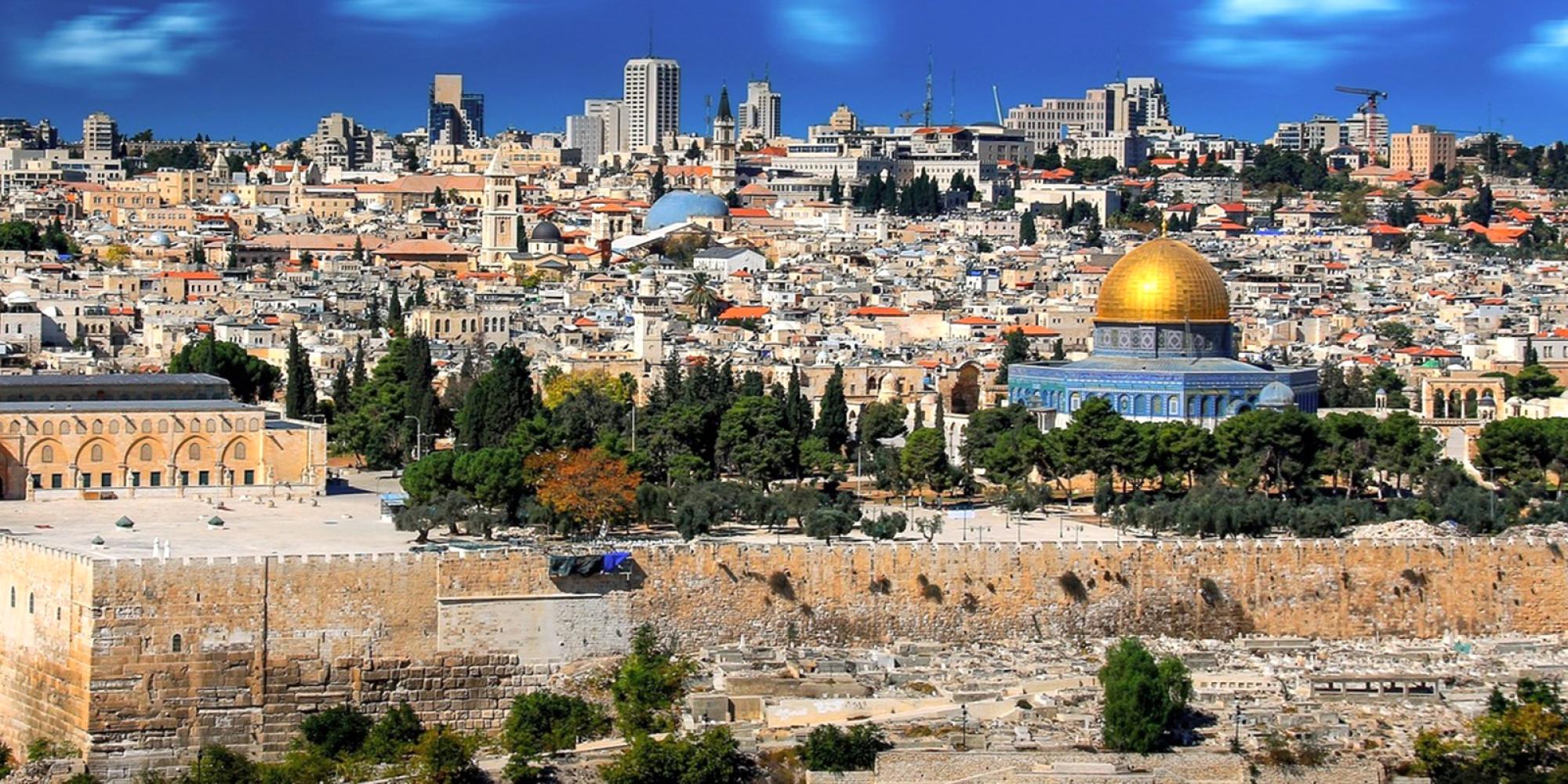
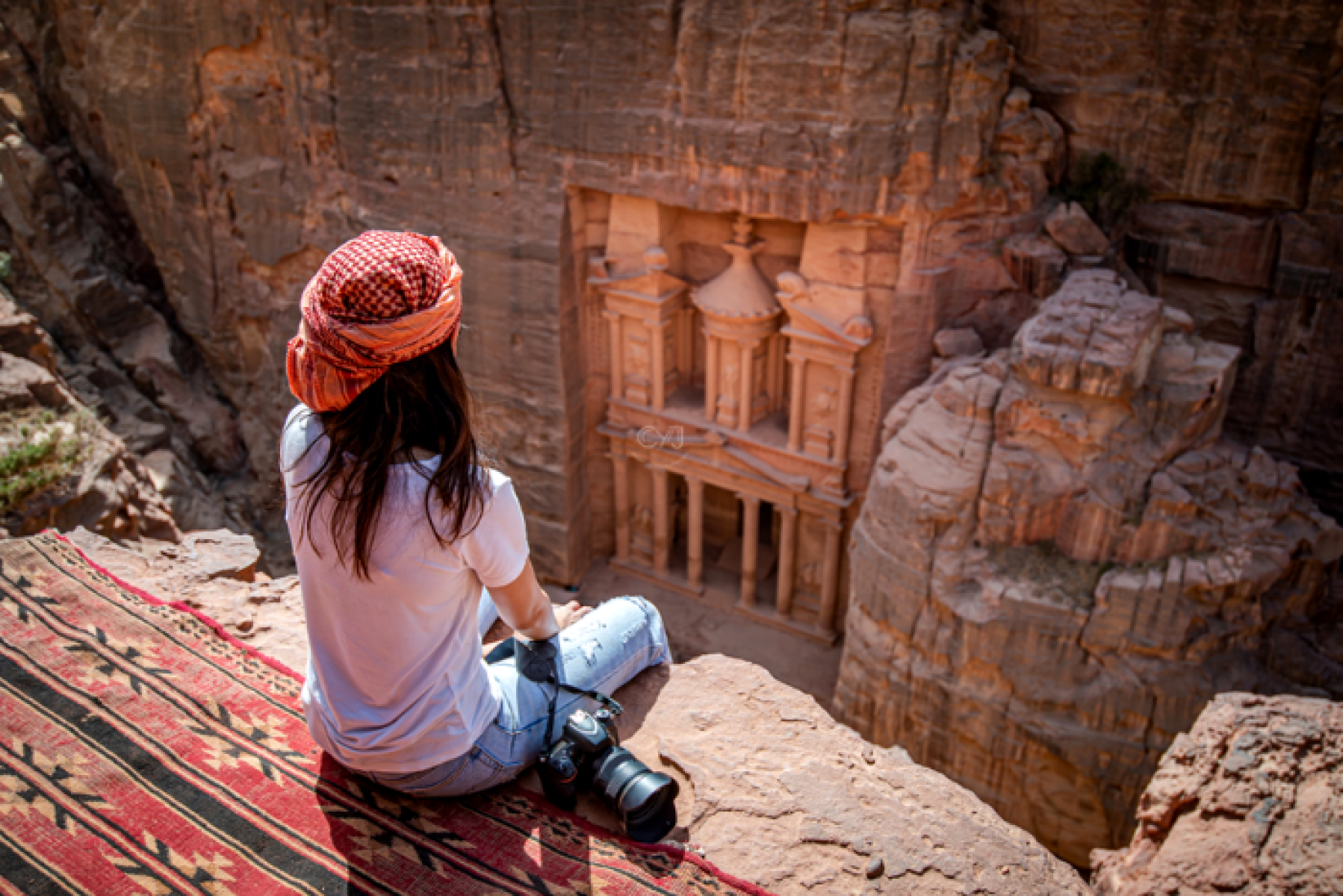
India is always considered as a land of diverse cultures and traditions as it has a lot to offer both from the past and the present. Be it the trove of culture, crafts, art, philosophy or architecture, India attracts tourists from all over the world to witness its heritage culture. Being the witness of various civilizations, covering around 5000 years of history, India makes one of the best tourist destinations of the world having a lot of historical milestones. The established kingdoms, and the brave rulers left behind their legacy that lets us to dig a bit deeper into the historical significance of the country. India is like a buffet of history for those who loves to explore the heritage sites.
UNESCO also identifies India as one of the important World Heritage Site globally. If you are planning for a heritage tour, the top 10 sites will win your heart by their immense popularity, astonishing architecture, and exciting stories of the past.
Let’s find out what the heritage sites in India looks like:
RED FORT
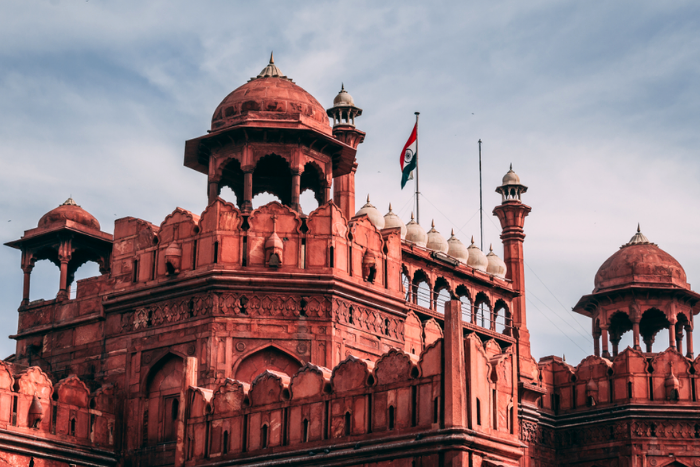
Location- Old Delhi, Delhi
The capital city of India- Delhi is not only famous for the broad roads, parliamentary buildings, vibrant culture but also represents the historical era of the past. Red Fort is one such heritage site that illustrates the ruling time of the Mughals and Britishers both. According to the archaeological survey of India, Red Fort was included proudly in the popular list of UNESCO World Heritage Sites in India.
Founded by Emperor Shah Jahan, Red Fort is famous for its Red Sandstone architecture. It has been said that it took around 10 years to build the fort. The architecture of the fort reflects the elements of Persian, Islamic, and Hindu style art work. At first, the Red Fort was the political hub of the Mughals including the private pavilions, the Diwan-i-aam, the Diwan-i-khas and later on it came under the possession of the Britishers.The fort holds numerous smaller monuments and palaces like hall of public audience, hall of private audience, pavilions, courtyards, gardens, mosques and others.
On the day of Independence, a huge amount of crowd gathers in front of the Lahore Gate to celebrate the freedom. Also, every evening, at Red Fort, an evening light and sound show takes place so that tourists can relive India’s history.
TAJ MAHAL
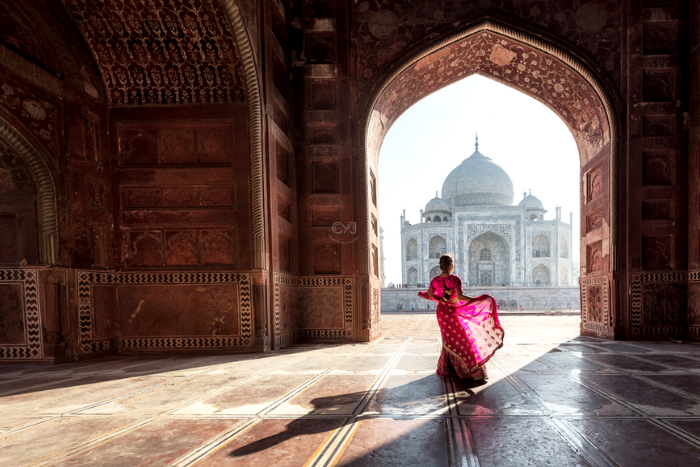
Location- Agra, Uttar Pradesh
Another heritage site of India that attracts a flock of tourists every year is the Taj Mahal. One of the finest and gorgeous structures in the history of India, Taj Mahal is a huge mausoleum of white marble in the district of Agra. It stands as a symbol of pure and eternal love as it was built by the Emperor Shahjahan in the memory of his beloved wife Mumtaz Mahal.
One of the Seven Wonders of the World, the Taj Mahal was built after the hard work of 22 years. Almost 20000 workers used their skills and art in building this Mughal architecture. The beautiful monument was constructed using the White Marble and blending the architectural designs of various Mughal buildings that is why it is considered as a masterpiece. Also, visiting Taj Mahal on a full moon light is considered to be the romantic activity in Agra.
AJANTA AND ELLORA CAVES
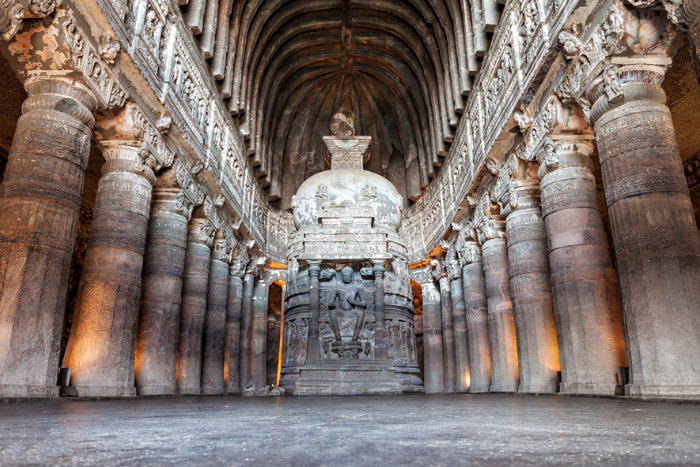
Location- Aurangabad, Maharashtra
Snugged in the Sahyadri Hills in Aurangabad, the Ajanta and Ellora Caves are the great attraction for the tourists coming to Maharashtra. The heritage tour of Maharashtra is incomplete without pinning into these outstanding artistic pursuits. Reflecting the ancient Indian architecture, the caves represents the cultural importance of the nation.
Both the caves are built in two different phases. Where Ajanta Caves are famous for its 31 rock-cut Buddhist caves, Ellora Caves flaunts 34 rock-cut temples and caves. The style and architecture of both the caves is worth appreciating owing to their minor carvings and sculptures related to the life of the Buddha. Later, the caves became the host of numerous temples, monasteries, interesting sculptures, and giant Buddha statues. So, if you are planning a vacation to Maharashtra, the best time to visit the caves is between June to September in monsoon and October to February in the winters. The months of March, April and May should be avoided due to the searing summer heat.
JANTAR MANTAR
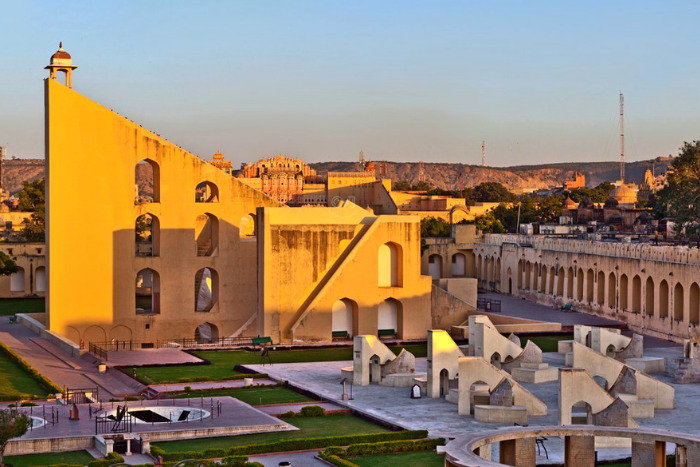
Location- Jaipur, Rajasthan
Established in 18th century, Jantar Mantar is an astronomical structure located in Jaipur, Rajasthan. Built during the era of Rajputs, Jantar Mantar is a collection of 19 instruments having the astronomical values that are used to calculate the celestial coordinate systems, horizon-zenith local system, the equatorial system, and the ecliptic system. One of the largest observatories of India, it was used in the ancient times to find the location of sun, moon, and other planets for scientific reasons. Jantar Mantar is an amalgamation of religion, science and art and is a name of the five huge buildings situated in Jaipur, New Delhi, Ujjain, Varanasi and Mathura.
Due to its scientific significance, Jantar Mantar was looked after by many astronomers, historians, and architects as it was capable for detecting time, identifying the constellations, and for analyzing the orbits around the sun.
TEMPLES OF MAHABALIPURAM
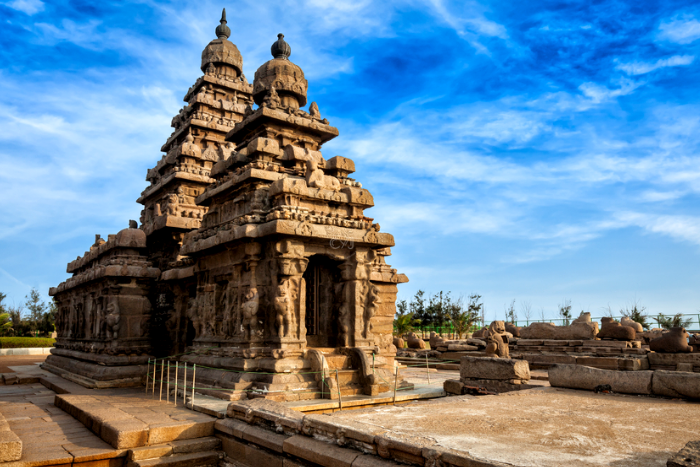
Location- Mahabalipuram, Tamil Nadu
The group of temples at Mahabalipuram includes the PanchaRathas Temples, GaneshaRatha, Cave Temples of Mahabalipuram, Structural Temples including the Shore Temple and the Olakkannesvara Temple and the Descent of the Ganges. The group of temples are famous for their carved architecture and cultural significance. The creativity and craftsmanship of the ancient workers showed their skills and artwork. Built in the reign of Pallava Rulers, these temples represent the ratha architecture of India.
In all the heritage sites of India, these temples hold world’s largest Open-Air Rock Relief, Chariot Temples, Mandapas, Pallava Dynasty Architecture. There are more than 40 sites of attractions like PanchaRathas, DharamarajaRatha, Arjuna Ratha, Draupadi Ratha, etc and six cave monuments in this site. Also, its not only the historical monuments that are appealing, the glittering sand beach, handicrafts, and stone-carved items also grabs the attention of the tourists.
SUN TEMPLE
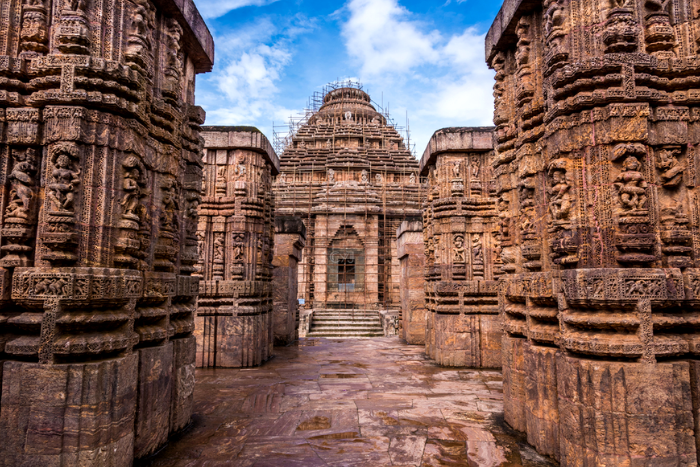
Location- Konark, Orissa
Explore the most beautiful heritage site of India- Sun Temple in Konark. It is named so because of the direct falling rays of the bright sun. Constructed in 13th century, the temple is built by King Narasimha Deva I in the shape of a chariot. The chariot is led by six large stone horses; where each horse depicts the 6 Brahmin sanctuaries located in different parts of India. The wheels of the chariot are actually the sun dial that has a high astronomical significance. The beautiful architectural designs, precise artwork, and free-standing sculptures of animals and humans illustrates the architecture, joy and the rhythm of the Kalinga life. The temple is originally said to be built at the mouth of river Chandrabhaga but the waterline receded since then.
For the tourists coming to Orissa, it is a great pilgrimage and sightseeing option.
KHAJURAHO MONUMENTS
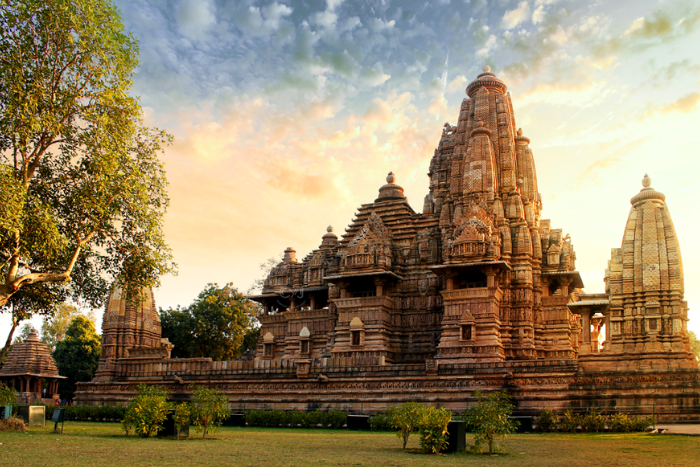
Location- Khajuraho, Madhya Pradesh
The monuments of Khajuraho is an important UNESCO World Heritage Site in India. Well-known for their Nagara style symbolism and erotic figures and sculptures, the monuments of Khajuraho is an amalgamation of total of 85 temples spread across 20 kilometers of area. Tourists came to see the beauty through which the sensuous carvings of humans and animal form is shown. The erotically positioned sculptures are something that catch the site of the tourists vividly.
These sculptures represent the rich cultural heritage of India. Most of the monuments here are built between 950 to 1050 CE under the reign of Chandella dynasty.
HAMPI MONUMENTS
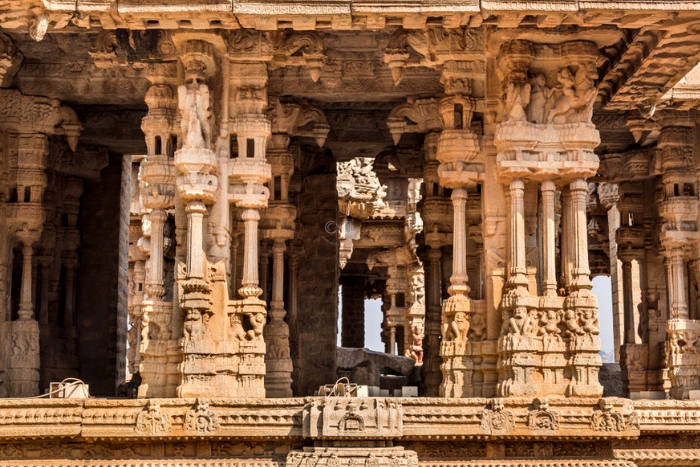
Location- Hampi, Karnataka
Located in the Northern part of Karnataka, the ruins at Hampi are a collection of the heritage sites depicting the Dravidian style of art and architecture. The precise art work, beautiful sculptures, and heritage value of the monuments attracts the tourists from every part of the world. Among the various monuments of Hampi, the Virupaksha Temple is the most important heritage and religious center for the Hindus.
All the monuments that are present in the Hampi region are collectively known as the ‘Group of Monuments at Hampi’. Krishna temple complex, Narasimha, Ganesa, Hemakuta group of temples, Achyutaraya temple complex, Vitthala temple complex, Pattabhirama temple complex, Lotus Mahal complex, several puras or bazaars surrounding the temple complex, and also living quarters and residential areas are some of the known areas in the region of Hampi.
BULAND DARWAZA- FATEHPUR SIKRI, UTTAR PRADESH
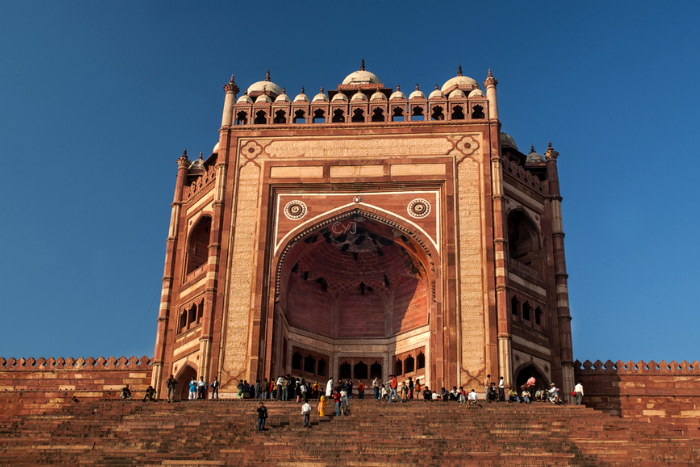
Location- Fatehpur, Uttar Pradesh
Conferred as one of the best examples of Mughal architectural finesse, Fatehpur Sikri is acclimatized as the World Heritage Site by UNESCO. Fatehpur Sikri took 15 years to be fully constructed under the rule of Akbar. The fort is a collection of courts, palaces, mosques and other structures. Fatehpur Sikri initially was the capital of Mughal dynasty and then of the Akbar after the abandonment.
A heritage tour to Fatehpur Sikri will let you explore some of its very impressive features like the Diwan-e-Aam, Diwan-e-Khas, Jama Masjid etc.and one of the best sights of Fatehpur Sikri is the “BulandDarwaza” (literal meaning: The great gate). It stands out in the whole complex because of it being the largest gateway in the whole world. Owing to its majestic size and beauty façade, BulandDarwaza is a marvelous creation of the past illustrating the style and elegance of the Mughal Era.
SHRI SOMNATH JYOTIRLING TEMPLE, GUJARAT
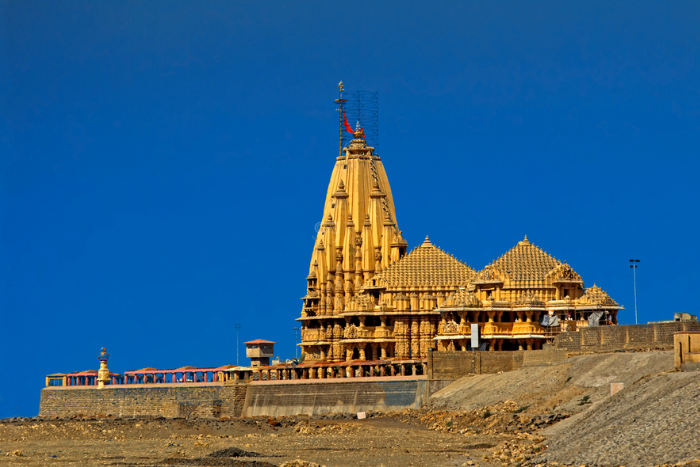
Location- Gir Somnath, Gujarat
Strategically located along the Western coast of India, Shri Somnath Jyotirling Temple is the first among the 12 Jyotirlings of India. Each of the 12 jyotirlinga sites take the name of a different manifestation of Shiva. Considered to be the world heritage site, the temple is a popular pilgrimage site in Gujarat. The significance of it being the pilgrimage site is because of the meeting of three different rivers namely, Kapila, Hiran, and Saraswati. In the past, the temple was destructed by various Muslim invaders which cause the reconstruction of the temple. The final reconstruction in May 1951, the temple was built in Chalukya style of Hindu Temples.
The Somnath temple is known as "the Shrine Eternal" as it was reconstructed repeatedly; inspired by the book written by K.M. Munshi. The sacred temple is visited by millions of pilgrims every year to get the blessings.